SBC Facility News and Events
November 4, 2016
SickKids SBC Facility personnel attended the Buffalo – Hamilton – Toronto Crystallographic Organization’s 25th symposium held at McMaster University in Hamilton, Ontario as a sponsoring member. This annual event is a one day meeting for macromolecular crystallographers in Western New York and Southern Ontario to discuss and learn about new and innovative crystallographic techniques and provide a venue for showcasing the achievements of graduate students and postdoctoral fellows.
The SBC was on hand to provide information to attendees about facility instrumentation and in-house techniques that can help in the protein crystallization and characterization process. Some of these include the use of the UNit, DSC and CD for optimal buffer and ligand / co-factor screening to promote stabilization, interaction characterization using the Auto-iTC and Octet Red96, oligomeric state determination using the the NanoSight NTA and Bio-HPLC-MALS-RI as well as having it’s own dedicated X-ray crystallography laboratory that includes a diffractometer, crystallization robots, incubation, visualization and other support equipment.
To learn more about chemical screening methods to identify ligands that promote protein stability, protein crystallization, and structure determination, please see PubMed ID: 17035505.
SickKids SBC Facility personnel attended the SickKids Industry Partnering Day at the Peter Gilgan Centre for Research and Learning. This was an opportunity for SickKids researchers to meet local innovative companies, both formally and informally, in the hope of finding collaborative partners to advance specific research projects, creating new sponsorship’s for research projects and government grants as well as meeting representatives from the various SickKids core facilities such as the Structural & Biophysical Core Facility
April 12, 2017 - SickKids PGCRL Spotlight Series presentation of an introduction to the SBC Facility
April 12, 2017
As part of the Spotlight monthly seminar series, Greg Wasney, Manager of the SBC Facility, presented a describing of the available technologies and applicable techniques available to scientists in the SickKids Structural & Biophysical Core Facility.
The presentation was held held on April 12, 2017 from 12:00 – 1:00pm at the Peter Gilgan Centre for Research and Learning in Event Room 3A/3B.
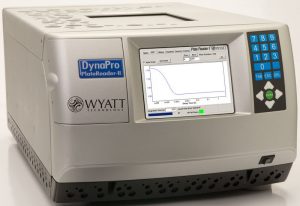 September 8, 2017
September 8, 2017
The SBC is pleased to announce that it will be adding Wyatt’s DynaPro Plate Reader II Dynamic Light Scattering (DLS) instrument to it’s growing portfolio of analytical instruments. The DynaPro Plate Reader II is a high-throughput DLS capable of analyzing samples in industry-standard multi-well microplates. Options include the use of 96, 384 or 1536-well plates, with a minimum sample volume of 4 µL, isocratic and temperature gradient control from 4°C to 85°C and on-board camera for sample quality control and data diagnostics. Some applications of this instrument include high-throughput protein, nanoparticle, biotherapeutics and polymer size and interaction characterization, as well as protein stability, aggregation and oligomerization determination.
More information about the DynaPro DLS Plate Reader II can be found here.
The DynaPro DLS Plate Reader II is expected to be installed at the SBC Facility in early October, 2017.
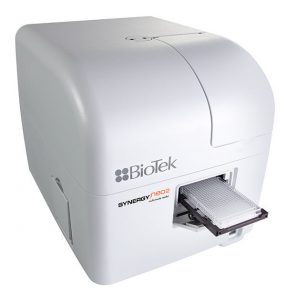
October 12, 2017
The SBC is pleased to announce that it will be adding BioTek’s Synergy Neo2 HTS hybrid multi-mode microplate reader to it’s growing portfolio of instruments. The Neo2 makes use of BioTek’s hybrid technology where the instrument has both quad monochromators (top and bottom) and filter-based (top) optics. Modes of detection include fluorescence (variable bandwidths from 3 nm to 50 nm in 1nm increments), fluorescence polarization, time-resolved fluorescence, UV-VIS absorbance, luminescence and alpha laser technologies. The instrument has the capability of using up to 1536-well microplates, controlling the sample temperature incubation up to 65°C, purging the sample environment with a compressed gas and taking advantage of the integrated dual injector module. The instrument can measure wells using end point, kinetic, spectral scanning and well area scanning modes along with linear, orbital or double orbital plate shaking. Users of the instrument will also have access to the Take3 micro-volume plate where up to 48 protein or nucleic acid samples can be quantified at one time using only 2uL / sample. In addition to fluorescence techniques using the monochromators, some of the filter-based assays available for use are AlphaScreen, AlphaLISA, AlphaPLEX, GeneBLAzer, Europium and Terbium LanthaScreen (FRET), LANCE TR-FRET, DELFIA-TRF, as well as several fluorescence polarization assays including FITC, BODIPY-TRM, TAMRA, Texas Red and Cy5.
More information about the Synergy Neo2 multi-mode microplate reader can be found here.
The Synergy Neo2 is expected to be installed at the SBC Facility in early November, 2017.
October 13, 2017
The DynaPro dynamic light scattering plate reader has now been installed and is ready for use.

Please speak with Greg Wasney for more details.
November 15, 2017
The Synergy Neo2 multi-mode microplate reader has now been installed and is ready for use.

Please speak with Greg Wasney for more details.
March 19, 2018
The SBC Facility has recently moved into a new laboratory space located on the northwest corner of the 21st Floor, PGCRL. This new and large laboratory features more bench space for current and future instrumentation, space for wet-lab bench work as well as great views of the surrounding Toronto region. This new laboratory will help accommodate the growing needs of the facility and its users, provide a bright and pleasant space to conduct research, promote collaboration and training.
In addition to the analytical instruments available, we offer facility users access to SBC Facility-exclusive support equipment to assist with experimental set-up. This includes a full range of mechanical and electronic single and 12-channel pipettemen, refrigerated centrifuges, temperature controlled sonicators and stirring plates, vortexes and dry bath heating / cooling blocks. The facility provides dedicated computer and desk space, in both the laboratory and PGCRL administrative office areas, for user data analysis. All facility users also have included access to full-time technical and experimental support provided by experienced and dedicated personnel.
Our facility is open to all scientists from universities, academic research hospitals and private industry members. We offer all-access, yearly facility memberships as well as individual instrument day-use packages. We also accept sample submissions for various instrument-based characterization projects.
If you would like more information about the SBC Facility, or are interested in arranging a tour of the facility, please feel free to contact us anytime.
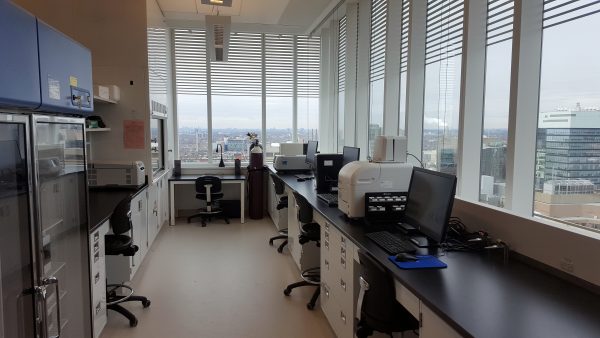
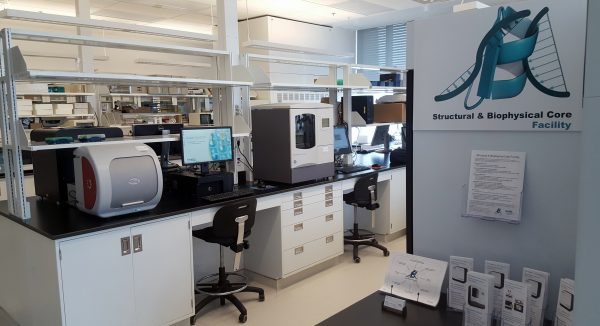
March 20, 2018
 The SBC Facility is happy to announce the upgrade of Wyatt’s DynaPro II DLS Plate Reader to the DynaPro III DLS & SLS Plate Reader. The DynaPro III contains all the features of the previous DLS instrument but with the addition of static light scattering (SLS) detection capability plus improved software and hardware, including improved temperature control and enhanced front screen GUI.
The SBC Facility is happy to announce the upgrade of Wyatt’s DynaPro II DLS Plate Reader to the DynaPro III DLS & SLS Plate Reader. The DynaPro III contains all the features of the previous DLS instrument but with the addition of static light scattering (SLS) detection capability plus improved software and hardware, including improved temperature control and enhanced front screen GUI.
In addition to it’s dynamic light scattering features and applications, static light scattering enables measurements of size, molecular weight, kD and A2 automatically and simultaneously using microplates. Simultaneous size and molecular weight assists with the understanding of protein unfolding versus aggregation versus time, temperature and solution conditions such as buffers and chemical denaturants. The DynaPro III Plate Reader now has the capability of heating clear tape seals to prevent condensation from forming under the tape, which can interfere with data collection from light scattering. This prevents evaporation that may occur during time and temperature experiments.
The DynaPro Plate Reader III is a high-throughput DLS & SLS instrument capable of analyzing samples in industry-standard multi-well microplates. Options include the use of 96, 384 or 1536-well plates, with a minimum sample volume of 4 µL, isocratic and temperature gradient control from 4°C to 85°C and on-board camera for sample quality control and data diagnostics. Some applications of this instrument include high-throughput protein, nanoparticle, biotherapeutics and polymer size and interaction characterization, as well as protein stability, aggregation and oligomerization determination.
More information about the DynaPro DLS & SLS Plate Reader III can be found here and here.
Time: 8:30 AM
Location: Marriott Downtown at CF Toronto Eaton Centre
525 Bay Street
Toronto, Ontario M5G 2L2
SickKids SBC Facility personnel once again attended the Buffalo – Hamilton – Toronto Crystallographic Organization’s 27th symposium held at McMaster University in Hamilton, Ontario as a sponsoring member. This annual event is a one day meeting for protein crystallographers in Western New York and Ontario to discuss and learn about new and innovative crystallographic techniques and provide a venue for showcasing recent achievements of graduate students, postdoctoral fellows and research associates as well as introducing new academic principle investigators to the research community.
The SBC was on hand to provide information to attendees about facility biophysical instrumentation and in-house techniques that can help promote protein crystallization and characterization. The SBC Facility also houses a dedicated X-ray crystallography laboratory, including a diffractometer, crystallization robots, incubation, visualization and other support equipment, all available to the research community.
To learn more about chemical screening methods to identify ligands that promote protein stability, protein crystallization and structure determination, please see PubMed ID: 17035505.
For more information regarding the SBC Facility’s infrastructure, please visit The SBC Facility’s webpage.
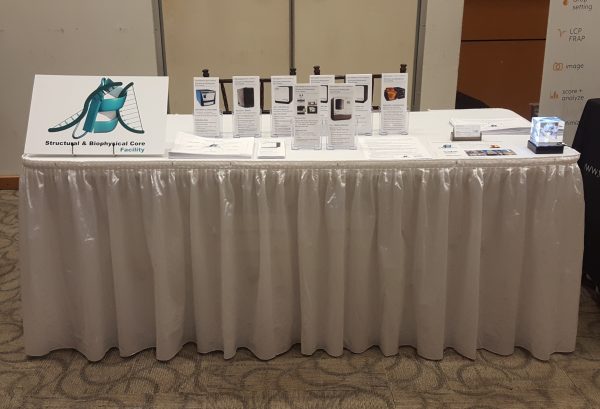
Wyatt Technology
(https://www.wyatt.com/blogs/featured-customer-greg-wasney.html)
(https://www.linkedin.com/feed/update/urn:li:activity:6479045415810531329)
Featured Customer: Greg Wasney
With extensive experience supporting some of the top life science research in Canada, Greg Wasney has gotten to know more than a few scientific instruments and scientific instrument vendors. SEC-MALS and DLS are among the many biophysical techniques he applies to protein characterization. We are pleased that he agreed to go on the record to tell us what he does and the role played by Wyatt instruments in his work.
Please tell us about your background: where you grew up, studied and the field you chose.
I grew up in Winnipeg, Canada and studied at the University of Manitoba, specializing in protein biochemistry.
What led you to choose that field? What are the challenges that excite you?
At an early point in my career, I was interested in a field of study that gave me training in a wider range of scientific fields. A career path in biochemistry allowed me to study various subjects such as biology, microbiology, molecular biology, genetics, organic, inorganic and physical chemistry. This also gave me early exposure to a wider array of analytical techniques and applications.
What does your current position entail? How does it tie in to your previous experience, and where is it going?
In my current position as the Manager of the Structural & Biophysical Core Facility at the Hospital for Sick Children in Toronto, I am responsible for a suite of approximately 25 analytical instruments and support equipment as well as all aspects of operating the facility. In addition to Wyatt’s miniDAWN® TREOS, Optilab® T-rEX and DynaPro® Plate Reader III, we have instruments used for protein structural denaturation characterization (Auto-DSC, DSLS, DSF, CD), molecular interactions (Auto-ITC, Octet), multi-mode detection used for enzymology and other assays (hybrid plate readers and supporting liquid handling robotics) and various other instruments such as a nanoparticle tracking analyzer, bio-inert HPLC, rheometer and fluorescence microscope. Additionally, the facility has a fully equipped laboratory housing a single protein crystal X-ray diffractometer, crystallization support equipment and an automated SAXS/WAXS with in-line FPLC.
My role as manager includes the care of all facility instruments and supporting infrastructure, training of scientists and student facility users and acting as a consultant to help guide and troubleshoot collaborator projects. I also lead several on-going contract research projects with internal and external academic scientists and industry partners. I am responsible for facility outreach as well as leading technique-based workshops for new scientists. The overall goal behind the SBC Facility is to be a central and fully maintained central resource for instrumentation and expertise while being a collaborative meeting point for the scientific community through an exchange of technologies, techniques and ideas.
In what context did you first learn about light scattering and Wyatt instruments?
I began working with Wyatt Technology instruments with the introduction of the first DLS plate reader during my research in high throughput protein characterization, crystallography and compound screening for drug discovery. DLS was routinely implemented during the protein characterization stage to determine optimal buffer conditions based on both protein stability, using a 384-well plate based thermo-denaturation technique (DSLS), and polydispersity (DLS).
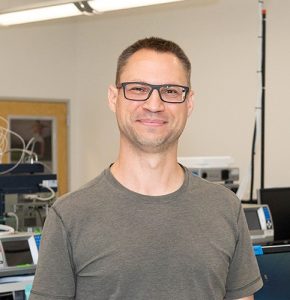
“I find that having Wyatt’s versatile light scattering instruments in the laboratory critical to the success of my protein biochemistry and biophysical characterization projects and I am always discovering new and imaginative ways to incorporate them into my research.”
How have MALS and DLS contributed to your research and development studies?
In general, I tend to gravitate towards instruments that are highly flexible and have the potential to be applied to a wide variety of research fields. The presence of MALS and DLS in the SBC Facility play a critical role in this due to their flexibility and applicability to address the questions being asked by a wide range of research programs. We are currently utilizing these instruments as quality control steps to characterize the size and polydispersity of antibodies and antigens to be used in downstream processes for developing new therapeutics. We also use these instruments to evaluate the oligomeric state and glycosylation of various proteins. Recently I have been developing DynaPro plate reader-based methodologies and workflow optimizations for medium to high-throughput screening of protein-ligand interactions in 384 and 1536-well plates incorporating robotics as well as compound displacement screening of protein-protein interactions for drug discovery. In addition, I am also working with chemical engineers in the Toronto community who are using the DynaPro plate reader to study the size and polydispersity of emulsions and polymers.
Any final thoughts for the readers?
Throughout my career I have focused on gaining knowledge and experience with new technologies while determining different ways these can be applied, thereby creating a “tool box” of techniques and approaches. As I love doing science in general, I am fortunate to have a career that has allowed me to work closely with scientists from a wide range of research backgrounds. Having this varied “tool box” of techniques and along with the wonderful support and infrastructure available at the Hospital for Sick Children, I have been in a position to offer several possible experimental paths to answer a particular project question or novel ways to approach a research program.
The SBC Facility is hiring!
The Structural & Biophysical Core Facility, located at The Hospital for Sick Children, is seeking a new research technologist.
Please follow the link (Technologist II – RI – 10421) in order to find out more information about this position as well as how to apply before the closing date of March 9, 2019.
The SBC Facility Welcomes Magnus Jorgensen to the Team!
We are very pleased to announce the addition of Magnus Jorgensen as research technologist to the facility team. Magnus will be involved in many aspects of facility operations including new user instrument training, ongoing user support, instrument maintenance and validation as well as special projects and outreach.
Magnus was born in Ottawa and grew up in Somerset, England before deciding to return to Canada in order to attend the University of Toronto and obtain a bachelor degree in biochemistry and physiology. Already being very well experienced and familiar to many SBC Facility users and collaborators, Magnus began volunteering in the SBC Facility in March 2018 before transitioning to the new role of research technologist.
Magnus can be contact at jamesmagnus.jorgensen@sickkids.ca
The SBC Facility Acquires the Jasco J-1500 CD Instrument!
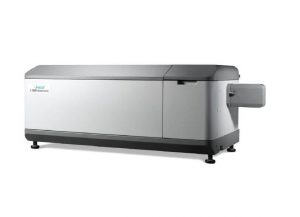 We’re excited to unveil our new circular dichroism spectrophotometer, the Jasco J-1500! This new instrument will replace our now-retired Jasco J-810, after 30 years of excellent service. The J-1500 is the latest Circular Dichroism and UV / Visible absorbance research-grade spectrophotometer and comes with many new upgraded features that will make it faster and easier to optimize your experiments.
We’re excited to unveil our new circular dichroism spectrophotometer, the Jasco J-1500! This new instrument will replace our now-retired Jasco J-810, after 30 years of excellent service. The J-1500 is the latest Circular Dichroism and UV / Visible absorbance research-grade spectrophotometer and comes with many new upgraded features that will make it faster and easier to optimize your experiments.
- Spectral scans and multi-wavelength thermal ramps can be conducted on up to 6 samples using the automated 6-position sample changer.
- An integrated sample Peltier system allows for a wide range of temperatures (-30 to 130°C) and magnetic stirrers are available for each cell to eliminate internal thermal gradients.
- The new microsampling disk allows for sample volumes as low as 2µL
- Simultaneous CD and absorbance measurements
- Dual detectors measuring 163 nm to 1600 nm (PMT and InGaAs)
All these features and more make the J-1500 able to provide more versatility and higher sample throughput for your circular dichroism experiments.
More information about the J-1500 CD instrument can be found here and here.
The SBC Facility is excited to announce its participation in the upcoming inaugural Scientific Core Facility Expo on October 16th! We are just one of many specialized core facilities here at SickKids, and this expo will give us the opportunity to share information about the work we are doing and how you can benefit from working with us. We invite you to come explore what each core facility has to offer and ask us any questions you may have about what the SBC Facility and it’s team can do for you.
Date: October 16, 2019
Time: 10 a.m. to 1 p.m.
Location: Gallery (2nd floor), Peter Gilgan Centre for Research & Learning, 686 Bay Street, Toronto
SickKids Core Facility Expo Poster 2019
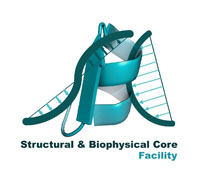
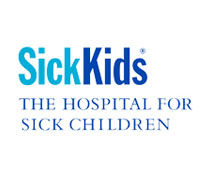
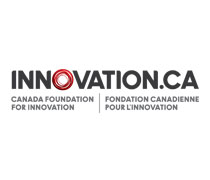
The SBC Facility will be hosting Refeyn and Systems for Research Corp (SFR)’s Mass Photometry Seminar & Technology Workshop on December 3 – 5, 2019. This event will feature a seminar explaining the principles and applications of mass photometry as well as an instrument workshop giving you a chance to analyze your own samples. Please reserve your time slot for this free instrument demonstration and sample test. More information and event registration can be found at the following link…
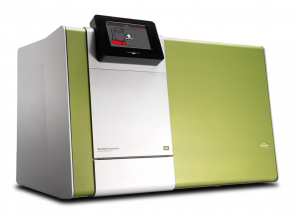 February 3, 2020
February 3, 2020
In collaboration with Dr. Frank Sicheri (Lunenfeld-Tanenbaum Research Institute), we are excited to announce that we will be adding NanoTemper’s Monolith NT.Automated microscale thermophoresis instrument to the SBC Facility portfolio of instruments. The Monolith NT.Automated is fully equipped to be a higher throughput and automated solution for characterizing various molecular interactions and determining Kd’s. The MST uses capillary chips containing 24 capillaries that require sample volumes of 15 µL for loading. Capacity and throughput of the instrument is up to four capillary chips (96 samples) per experiment in less than 30 minutes. Two interaction detection methods are available including a red fluorescent detector channel (PicoRED) and a label free tryptophan fluorescence detector channel (LabelFree). The PicoRED detector provides Kd values from pM up to the mM range for protein-protein and protein-ligand interactions while the LabelFree detector provides Kd values from nM up to the mM range for protein-ligand interactions. Various protein-labelling strategies for PicoRed applications include linkage through poly-histidine tags, amine groups and cysteine residues.
More information about the Monolith NT.Automated MST instrument can be found here.
The SBC Facility is hiring!
The Structural & Biophysical Core Facility, located at The Hospital for Sick Children, is seeking a new research technologist.
Please follow the link (Technologist II – RI – 12670) in order to find out more information about this position as well as how to apply before the closing date of July 24, 2020.
The SBC Facility Welcomes Serban Popa to the Team!
We are very pleased to announce the addition of Serban Popa as research technologist to the facility team. Serban will be involved in many aspects of facility operations including new user instrument training, ongoing user support, instrument maintenance and validation as well as special projects and outreach.
Serban was born in Bucharest and grew up in Toronto. After obtaining a BSc in biochemistry at the University of Waterloo, Serban moved on to the University of Toronto where he obtained an MSc with the Jumi Shin group, researching into how bHLHZ transcription factors recognize and target cognate DNA sites. Serban started his new role of research technologist in the SBC Facility in September 2020.
Serban can be contact at serban.popa@sickkids.ca
December 4, 2020
The Monolith NT.Automated MST instrument has now been installed and is ready for use.

Please speak with Greg Wasney for more details.
New Online Instrument Application Notes Added
The SBC Facility has added new instrument application and technical notes to the website. Please take a moment to view information regarding many of our latest instruments for ways to apply our laboratory technologies to your research projects.
Latest SBC Facility SARS-CoV-2 Research Published in Nature Communications
The SBC Facility was proud to contribute and be a part of its latest publication in Nature Communications (PMID: 34135340), entitled “Multivalency transforms SARS-CoV-2 antibodies into ultrapotent neutralizers” with lead author Dr. Edurne Rujas, under the direction of Dr. Jean-Philippe Julien (Molecular Medicine Program, The Hospital for Sick Children). The SBC Facility contributed to this research using many of its in-house technologies for protein characterization including the Octet Biolayer Inferometry for determining ligand / analyte binding affinities, the DynaPro DLS Plate Reader for determining hydrodynamic radius and polydispersity as well as the UNit thermo-denaturation instrument for determining Multabody stability.
Congratulations to the entire team!
The SBC Facility is hiring!
The Structural & Biophysical Core Facility, located at The Hospital for Sick Children, is seeking a new research technologist.
Please follow the link (Technologist II – RI – 15287) in order to find out more information about this position as well as how to apply before the closing date of November 27, 2021.
The SBC Facility Acquires the Sartorius ForteBio Octet RH16 BLI Instrument!
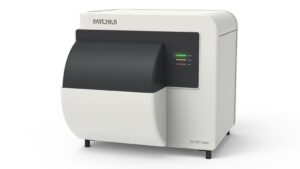 This new instrument will supplement and be an upgrade to our RED96 BLI instrument. The RH16 shares many of the same features but has many new features that allow for lower sample volumes and higher throughput.
This new instrument will supplement and be an upgrade to our RED96 BLI instrument. The RH16 shares many of the same features but has many new features that allow for lower sample volumes and higher throughput.
- Determines Kd, kon, koff of analytes with ligands
- Can monitor up to 16 biosensor channels simultaneously
- Uses either 384-well low volume (50 µL) or 96-well (200 µL) plates with a maximum capacity of two assays per experiment plates
More information about the Octet RH16 BLI instrument can be found here and here.
The SBC Facility Acquires Epiphyte3’s StarGazer-2 DSLS Instrument!
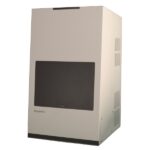 This new differential static light scattering (DSLS) instrument determines protein melting / aggregation temperatures (Tagg) using a CCD camera which monitors all wells in a 384-well plate simultaneously. The StarGazer-2 instrument has numerous applications including protein buffer optimization, ligand interaction characterization, compound library screening and dose response characterization, membrane protein optimization and evaluation of protein refolding conditions.
This new differential static light scattering (DSLS) instrument determines protein melting / aggregation temperatures (Tagg) using a CCD camera which monitors all wells in a 384-well plate simultaneously. The StarGazer-2 instrument has numerous applications including protein buffer optimization, ligand interaction characterization, compound library screening and dose response characterization, membrane protein optimization and evaluation of protein refolding conditions.
- High-throughput format in either standard or low volume 384-well microplates using a minimum protein concentration of 0.05 mg/mL and 2.5 µL/well
- Protein denaturation using temperature scanning and isothermal incubation from 10°C up to 95°C and with ramp rates from 0.1 °C/min up to 5 °C/min
More information about the StarGazer-2 DSLS instrument can be found here and here.
The SBC Facility Welcomes Shina Hussain to the Team!
We are very pleased to announce the addition of Shina Hussain as research technologist to the facility team. Shina will be involved in many aspects of facility operations including new user instrument training, ongoing user support, instrument maintenance and validation as well as special projects and outreach.
Shina can be contacted at shina.hussain@sickkids.ca
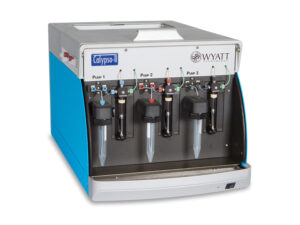 The SBC Facility Acquires Wyatt Technology’s Calypso II CG-MALS Instrument!
The SBC Facility Acquires Wyatt Technology’s Calypso II CG-MALS Instrument!
The new Calypso II Composition Gradient Multi-Angle Light Scattering (CG-MALS) is used to determine the dissociation constant (kd) and stoichiometry of label-free and immobilization-free protein-protein and other macromolecular interactions from picomolar to millimolar concentrations. It can also be used for oligonucleotide, nucleic acid and other biomolecule and polymer analysis including the characterization of reversible self- and hetero-associations, virial coefficients and molar mass determinations.
More information about the Calypso II CG-MALS instrument can be found here and here.
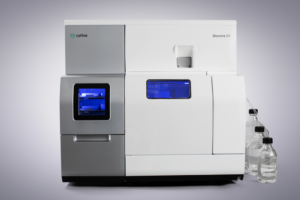 The SBC Facility Acquires Cytiva Life Science’s Biacore 8K Surface Plasmon Resonance (SPR) Instrument!
The SBC Facility Acquires Cytiva Life Science’s Biacore 8K Surface Plasmon Resonance (SPR) Instrument!
The new Biacore 8K SPR system is a high-throughput instrument used to characterize molecular interaction kinetics (Kd, kon, koff ) from mM to pM binding constants using using 8-channel, 16 flow cell sensor chips. This instrument compliments our Octet BLI systems providing higher sensitivity and flexibility when analyzing small molecules, fragments and other low molecular weight analytes in addition to proteins, peptides, nucleic acids and other biomolecules.
More information about the Biacore 8K SPR instrument can be found here and here.
 The SBC Facility Acquires CEM Corporation’s MultiPep 2 Automated Peptide Synthesizer!
The SBC Facility Acquires CEM Corporation’s MultiPep 2 Automated Peptide Synthesizer!
The new MultiPep 2 peptide synthesizer creates peptide microarrays on surface bound membranes and glass slides as well as resin bound solutions in multi-well plates and columns of different scales.
More information about the MultiPep 2 Automated Peptide Synthesizer can be found here and here.
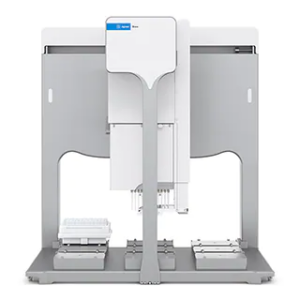 The SBC Facility Acquires Agilent Technology’s Bravo Bravo Liquid Handler!
The SBC Facility Acquires Agilent Technology’s Bravo Bravo Liquid Handler!
The new Bravo robot uses interchangeable 384 and 96 tip pipetting heads to dispense liquids between 0.3 µL to 250 µL in 96-well, 384-well and 1,536 well microplates. The liquid handling platform also has an on-board gripper, orbital shaker and tip wash station.
More information about the Bravo Automated Liquid Handling Platform can be found here and here.
The SBC Facility Welcomes Brandon Cordeiro to the Team!
We are very pleased to announce the addition of Brandon Cordeiro as research technologist to the SBC Facility team. Brandon will be involved in many aspects of facility operations including new user instrument training, ongoing user support, instrument maintenance and validation as well as special projects and outreach.
Brandon can be contacted at brandon.cordeiro@sickkids.ca
November 24, 2022 - Greg Wasney, Manager of the SBC Facility, is featured in SickKids Research News!
The Hospital for Sick Children News & Stories
Find the full news article here.
How one SickKids core facility is breaking down the barriers to scientific collaboration
Posted on November 24, 2022
Topics: All articles onResearch
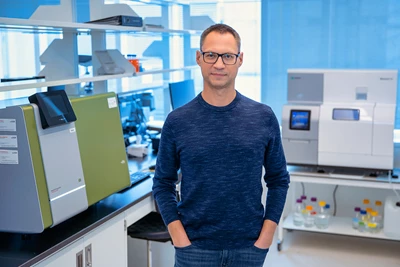
The Structural & Biophysical Core Facility is a centralized hub of state-of-the-art research instruments and expertise where scientists collaborate to advance paediatric medicine.
On the topmost floor of the Peter Gilgan Centre for Research and Learning, scientists at The Hospital for Sick Children (SickKids) lean keenly over work benches in the Structural & Biophysical Core Facility as they conduct research on a variety of state-of-the-art instruments, from large-scale association and particle analysis to molecular interaction characterization.
In stark contrast to the traditional image of a dark basement laboratory, light pours in from the large windows that frame the room, illuminating workstations that are neatly arranged with exclusive research support equipment. At the SBC Facility, new scientific advances are happening in an open, collaborative space where researchers of varying fields and levels of experience can share their ideas and learn from one another.
Greg Wasney, Manager of the SBC Facility, joined SickKids in 2015 to manage two sets of research instruments from different labs in the Molecular Medicine program. In the first year of operation, Wasney added seven more instruments to the facility through various funding applications and brought them together in one location.
“My philosophy is equipment should be centralized. If you have instruments hidden away, no one uses them,” says Wasney. “I want to transform research programs by bringing new technology and techniques to push science forward, faster.”
Under Wasney’s management and the leadership of facility Co-Directors Dr. Julie Forman-Kay, Head and Senior Scientist in the Molecular Medicine program, and Dr. Lynne Howell, Senior Scientist in the Molecular Medicine program, the SBC Facility has grown to include 30 instruments and is the only academic laboratory offering this range of infrastructure and expertise in the Greater Toronto Area.
Supporting innovative research
Beyond the strengths of the individual instruments, the SBC Facility strives to make its equipment accessible to all researchers by providing education and training for each instrument and user.
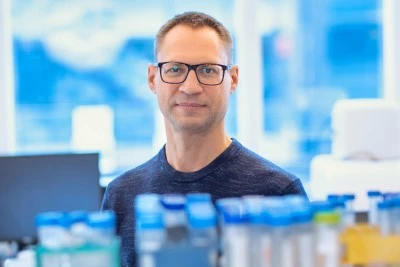
“By consolidating scientific research instruments under one facility we can ensure systematic access and provide full-time technical and project strategy support for researchers,” Wasney notes.
Wasney and the facility’s research technicians provide formalized training for every user who enters the space, from Senior Scientists to graduate students, and share insights on which equipment is most applicable to different research projects. The team has also developed application notes for each of the instruments, which are also available to review on the SBC Facility website.
Accessed by scientists across the SickKids Research Institute, the SBC Facility is an essential component of SickKids research infrastructure. The Research Institute is home to 14 core facilities, in addition to four clinical research core facilities, that provide members of the internal and external scientific community with the instrumentation, expertise and services needed to enhance the quality of their research. In the past year, the SBC Facility has hosted, consulted for and guided strategies and projects for more than 140 individual facility users and contributed to the publication of 36 manuscripts.
The SBC Facility has also been involved in a number of academic and industry COVID-19 research projects. This includes a study published in 2021 in Nature Communications on the neutralizing antibodies as a promising therapy for SARS-CoV-2 led by Dr. Jean-Philippe Julien, as well as research on the development and validation of rapid COVID-19 detection tests.
Today, there is no other facility like this in all of Canada. New instruments continue to be added based on users’ feedback, their ability to fill technological voids for scientist’s current and future needs, and their potential applicability to a range of research and fields, from biology to engineering. For Wasney, “the future of the facility lies in harnessing the flexibility of current and future instruments and in developing new and innovative techniques to support the future of research at SickKids.”
The SBC Facility and its instrumentation specializing in biophysical methods for investigating biomolecular structure, dynamics, stability, and interactions, is available for internal and external academic researchers, as well as industry partners, with a variety of payment and access structures based on the user type and equipment needed. Visit the SBC Facility website for user access and pricing details.
New Online MultiPep 2 Instrument Application Notes Added
The SBC Facility has added new MultiPep 2 Automated Peptide Synthesizer instrument application and technical notes to the website. Please take a moment to view information regarding this new instrument for ways to apply our laboratory technologies to your research projects.
New Online Calypso II CG-MALS Instrument Application Note Added
The SBC Facility has added new Calypso II CG-MALS instrument application and technical notes to the website. Please take a moment to view information regarding this new instrument for ways to apply our laboratory technologies to your research projects.
SickKids Scientific Core Facilities Expo
The SBC Facility will be attending the SickKids Scientific Core Facilities Expo taking place at the PGCRL (686 Bay St., Toronto) on September 20, 2023 from 10 am until 1 pm . The Core Facilities Expo is open to both the internal and external community. Please feel free to stop by the expo to visit the SBC Facility information booth as well as the information booths for the other core facilities.
We look forward to seeing you there!
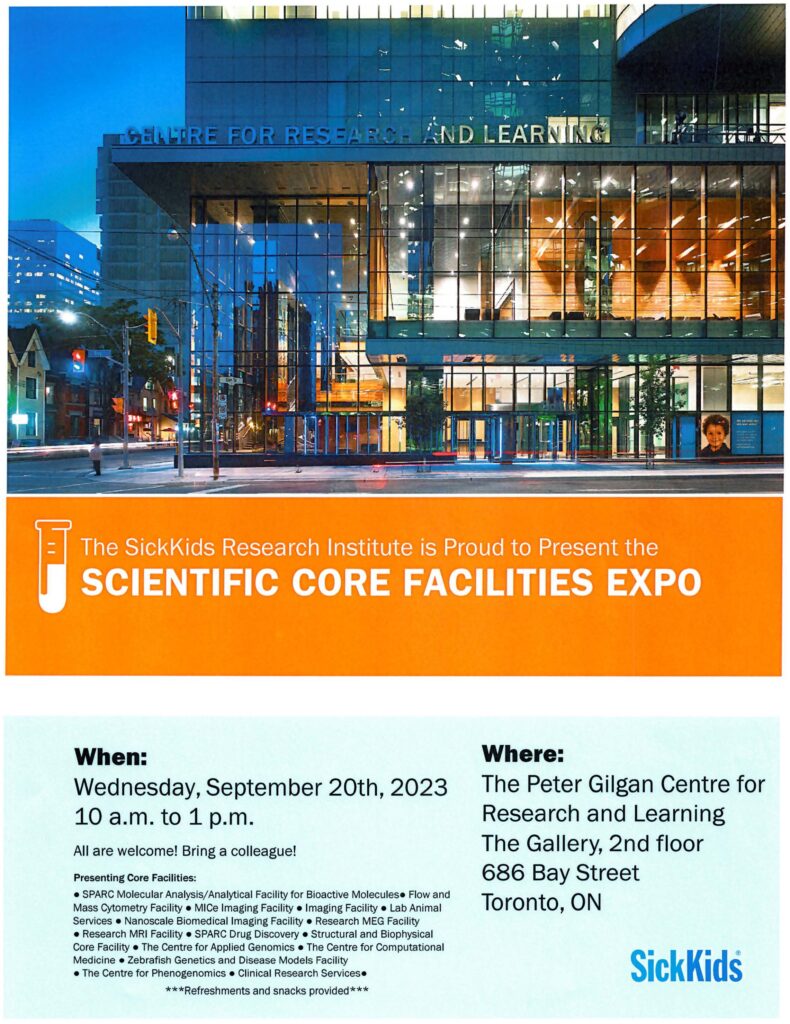
NanoTemper Technologies Instrument Demo Oct 2nd to 13th, 2023
The SBC Facility will be hosting NanoTemper Technologies’ Prometheus Panta and Monolith X instruments.
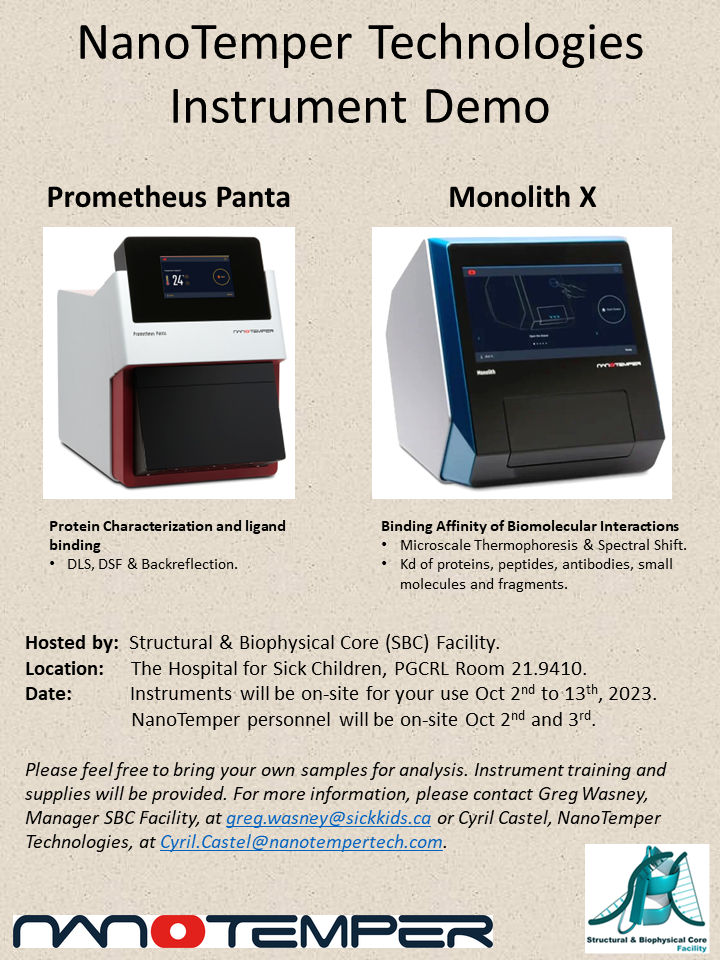
The SBC Facility is hiring!
The Structural & Biophysical Core Facility, located at The Hospital for Sick Children, is expanding and seeking a new (full-time, permanent) research technologist.
Please follow the link (Technologist II – RI – 19599) in order to find out more information about this position as well as how to apply before the closing date of October 19, 2023.
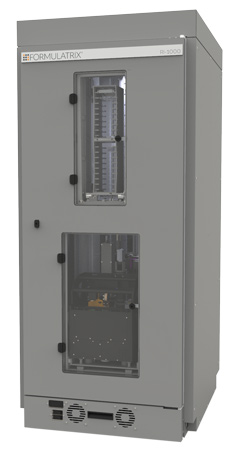 The SBC Facility Acquires the Formulatrix Rock Imager 1000 Protein Crystal Plate Hotel and Imager!
The SBC Facility Acquires the Formulatrix Rock Imager 1000 Protein Crystal Plate Hotel and Imager!
The new Rock Imager 1000 Rock Imager Plate Hotel contains 12x zoom visible light optics and compound zoom UV and multi-fluorescence imaging.
More information about the Rock Imager 1000 can be found here and here.
The SBC Facility Welcomes Mario Vargas to the Team!
We are very pleased to announce the addition of Mario Vargas as research technologist to the SBC Facility team. Mario will be involved in many aspects of facility operations including new user instrument training, ongoing user support, instrument maintenance and validation as well as special projects and outreach.
Mario can be contacted at mario.vargas@sickkids.ca
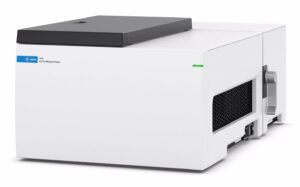 The SBC Facility Acquires Agilent Technology’s Cary 3500 UV-VIS Spectrophotometer Instrument!
The SBC Facility Acquires Agilent Technology’s Cary 3500 UV-VIS Spectrophotometer Instrument!
The new Cary 3500 is a UV-VIS spectrophotometer that simultaneously controls and monitors four independent air-cooled Peltier temperature zones across eight cuvette positions using cells with a minimum of 50 µL sample volume.
More information about the Cary 3500 UV-VIS spectrophotomter can be found here and here.

